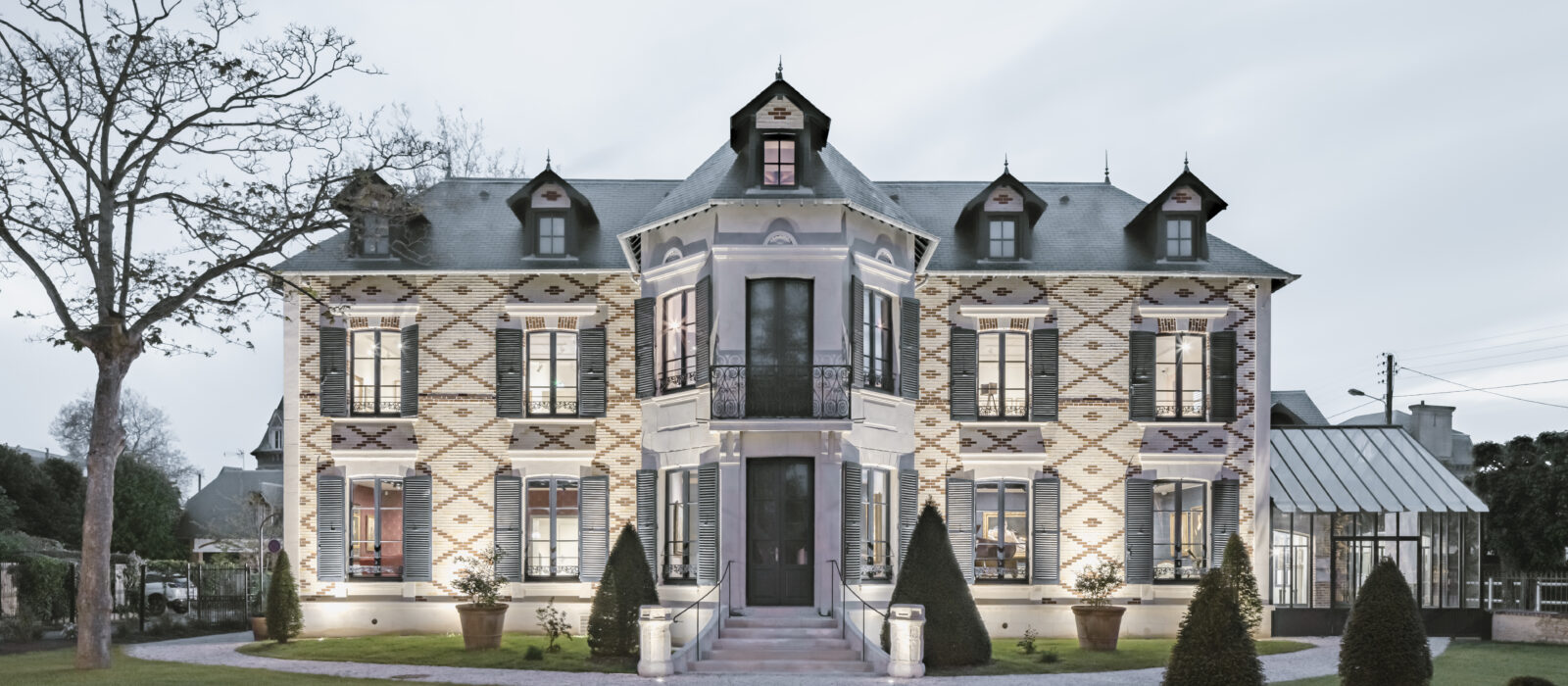
©Nicolas Trouillard
The Villa is lively, inspiring and open to all, set up in a family villa constructed by the architect Clément Parent in the 1860s. Representative of the first period of the construction of the seaside resort, the villa is characterized by a brick facade adorned with a diamond-shaped lattice pattern which distinguishes it from the rest of the buildings in the district, erected during the Belle Époque (Edwardian Era).
A living place, the villa has undergone a metamorphosis throughout the years, augmented by building styles for each of its changes of use up until the Bruno Coquatrix Cultural Center, which preceded its latest transformation to a museum space.
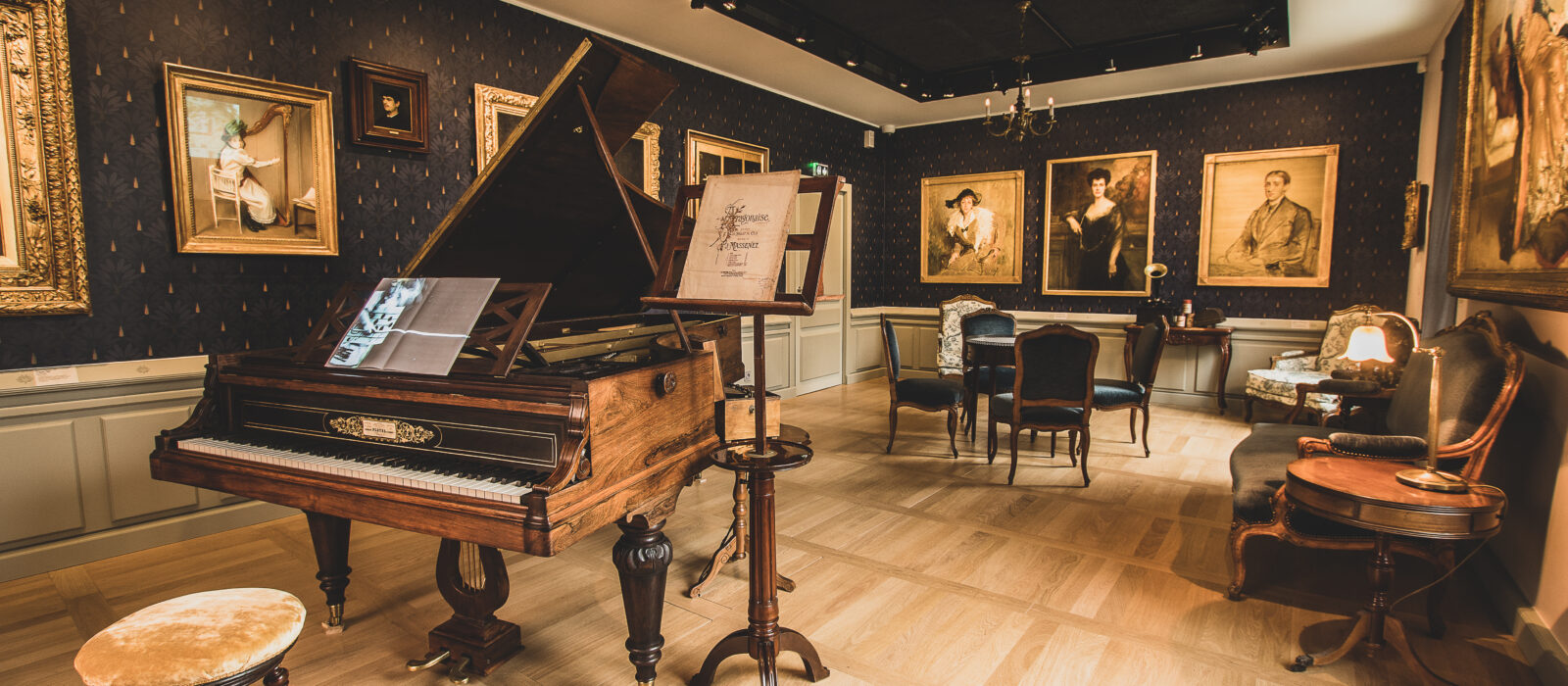
Dive into a past both distant yet recent by its use and the sensibilities of its contemporaries, discover the greatest artists of the Belle Époque (Edwardian Era) in an intimate setting and meet the imagination of Marcel Proust, his universe and his influences.
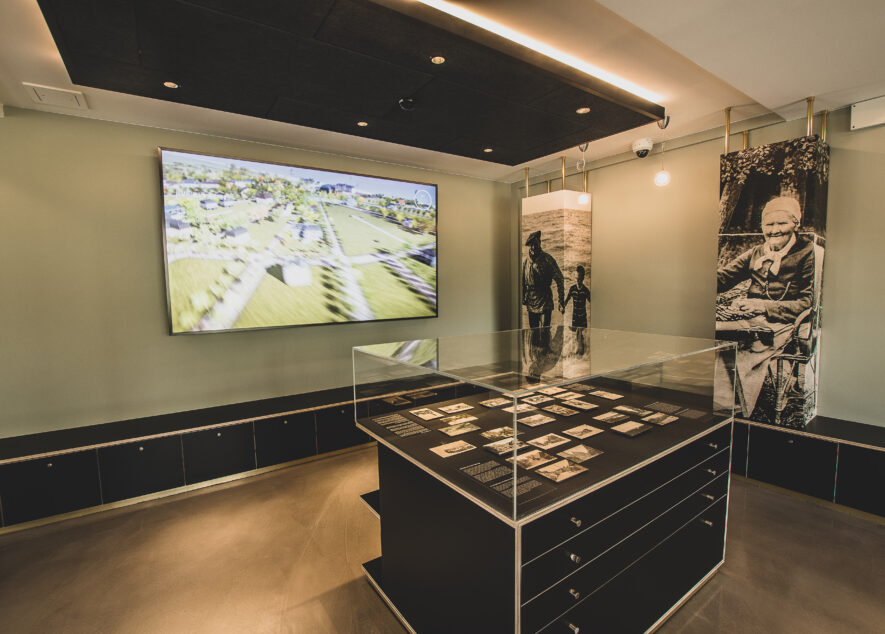
To introduce the Villa’s visit, the Architecture Pavilion offers the keys of comprehension to the architectural, social, and economic history of the Côte Fleurie and Cabourg beacause of this temporary exhibitions.
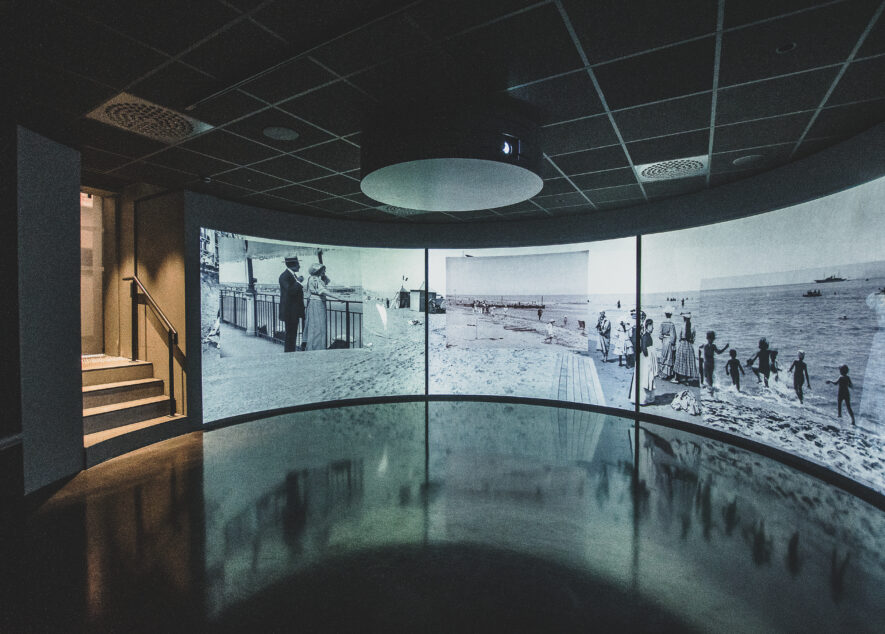
Is a gateway that brings visitors closer to their predecessors who, 100 years ago, lived or vacationed on the Côte Fleurie.
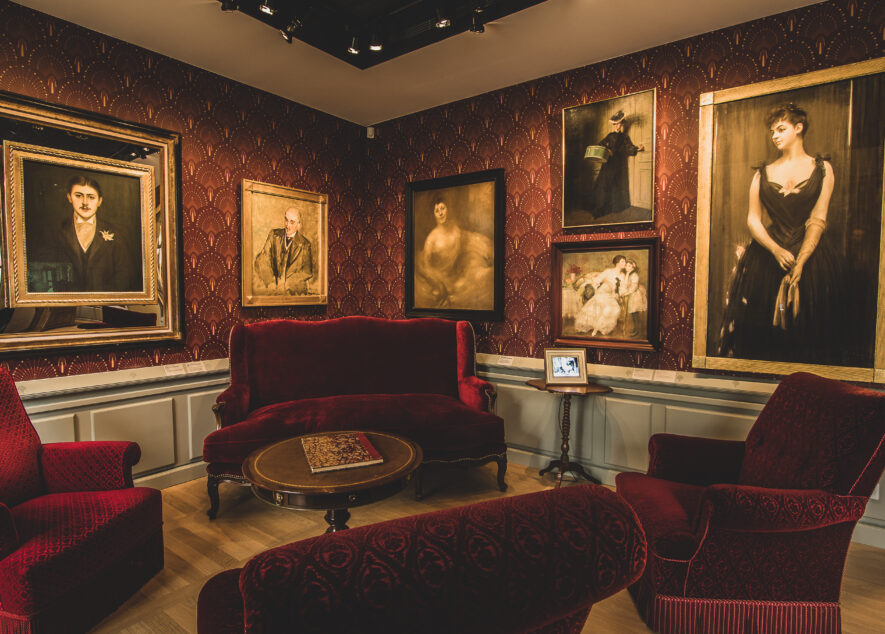
Lead visitors into the art of living during the Belle Époque on the Côte Fleurie. During the visit, you will meet artists such as MMarcel Proust, Louis Abbéma, Sarah Bernhardt, Jacques-Émile Blanche, Rosa Bonheur, Antoine Bourdelle, Claude Debussy, la comtesse Greffulhe, Blanche Hoschédé-Monet, Pierre Loti, Madeleine Lemaire, Auguste Rodin and all the Belle Époque vacationing at the Villa du Temps retrouvé.
Discover the works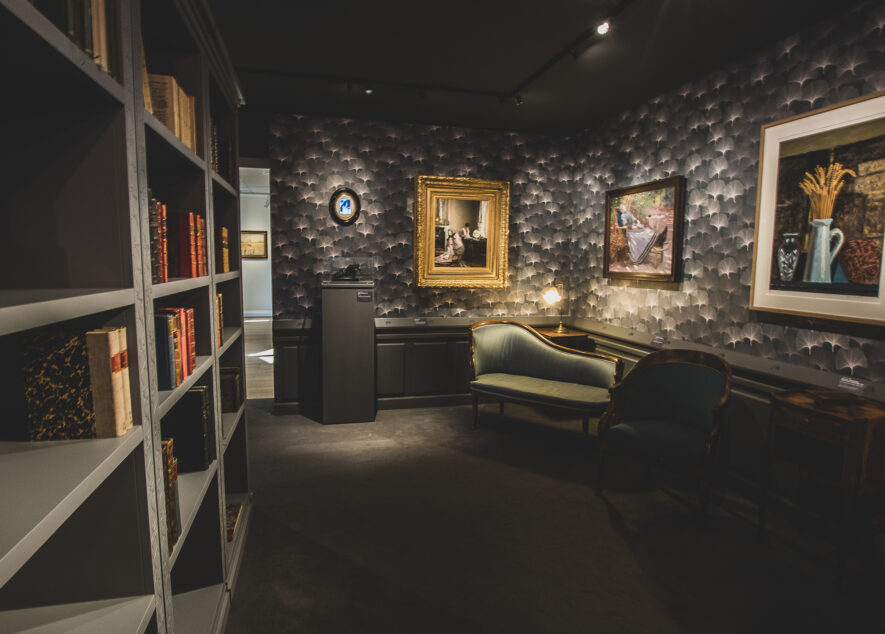
Invite visitors to discover the literature of the Belle Époque. By means of an open-access library, visitors can read the works of authors like Colette, André Gide, Anatole France, Pierre Louÿs, Pierre Loti… works that have been read and are still popular, works that can be continually rediscovered.
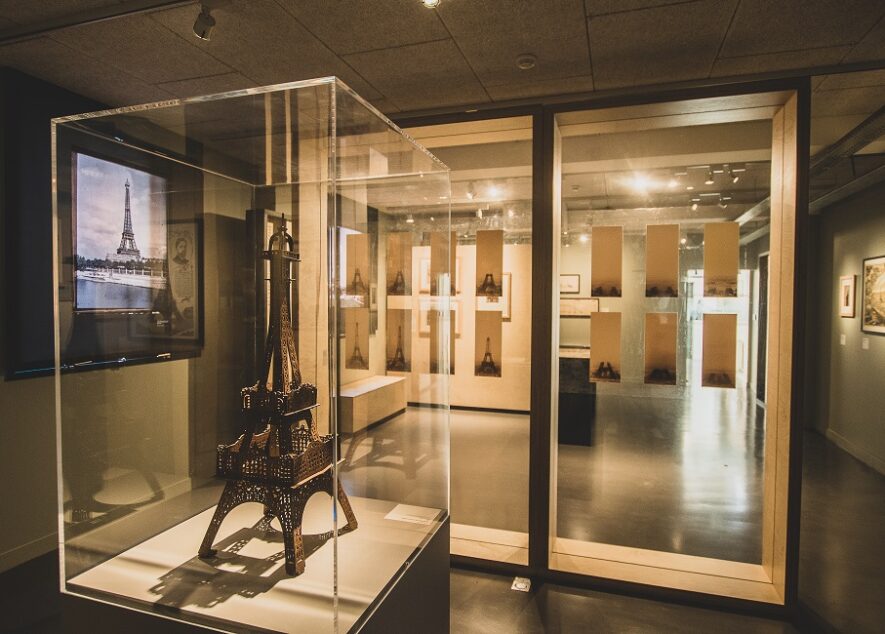
The temporary exhibitions present an issue or focus on a popular aspect of the Belle Époque’s culture in order to address all the facets of the period and highlight both the systems of influence between the elite and the popular culture and the concrete links connecting our contemporary period to the Belle Époque.
Discover the temporary exhibitions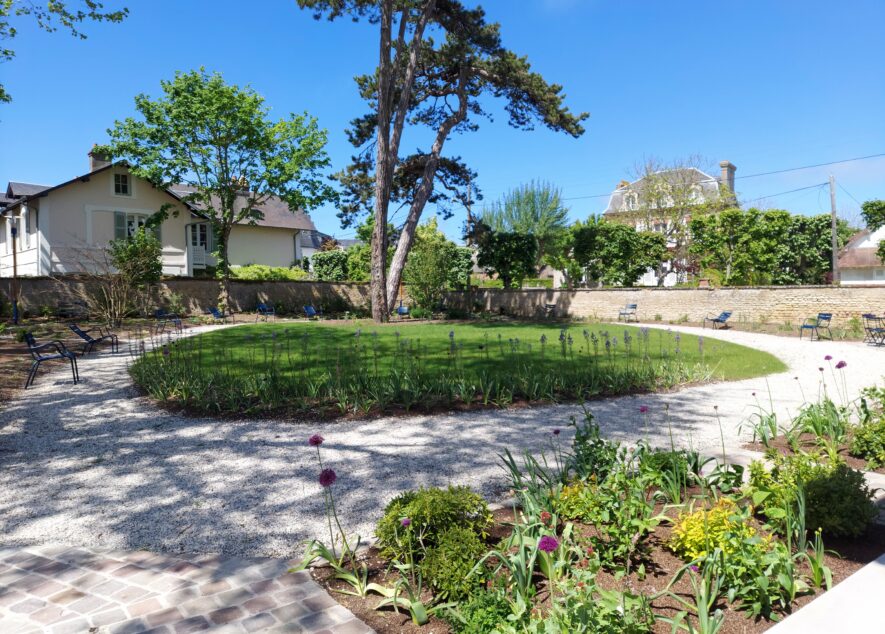
Are thought of as the full extension of the visit, with the evocation of a real Belle Époque garden with Proustian essences cited in the Proust’s novel The search of lost time.